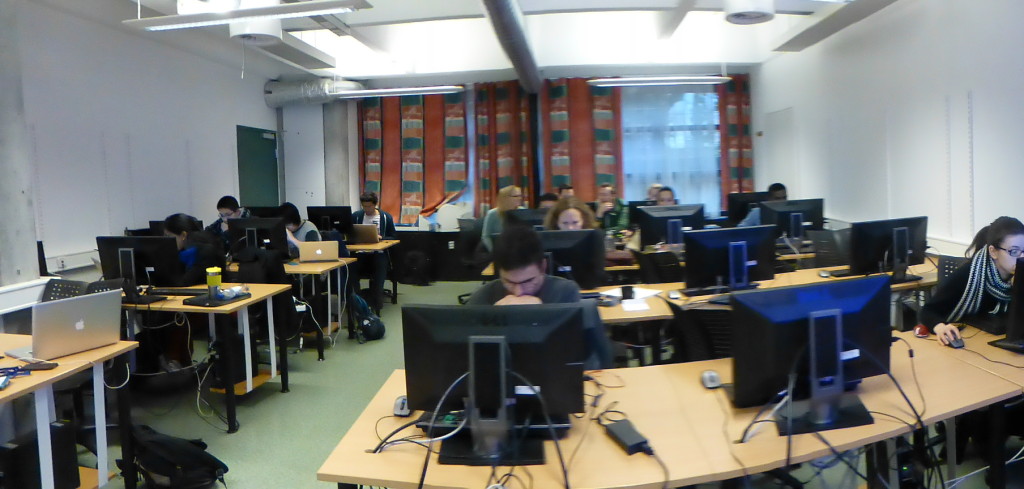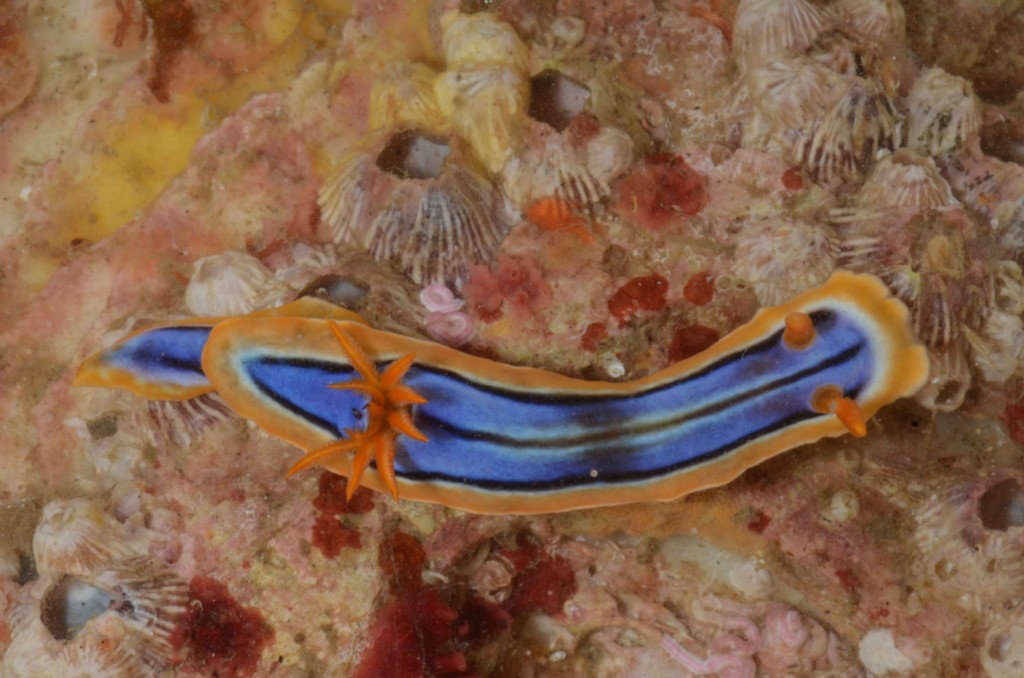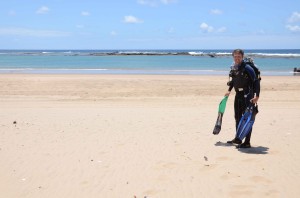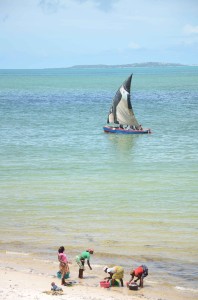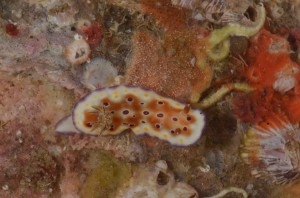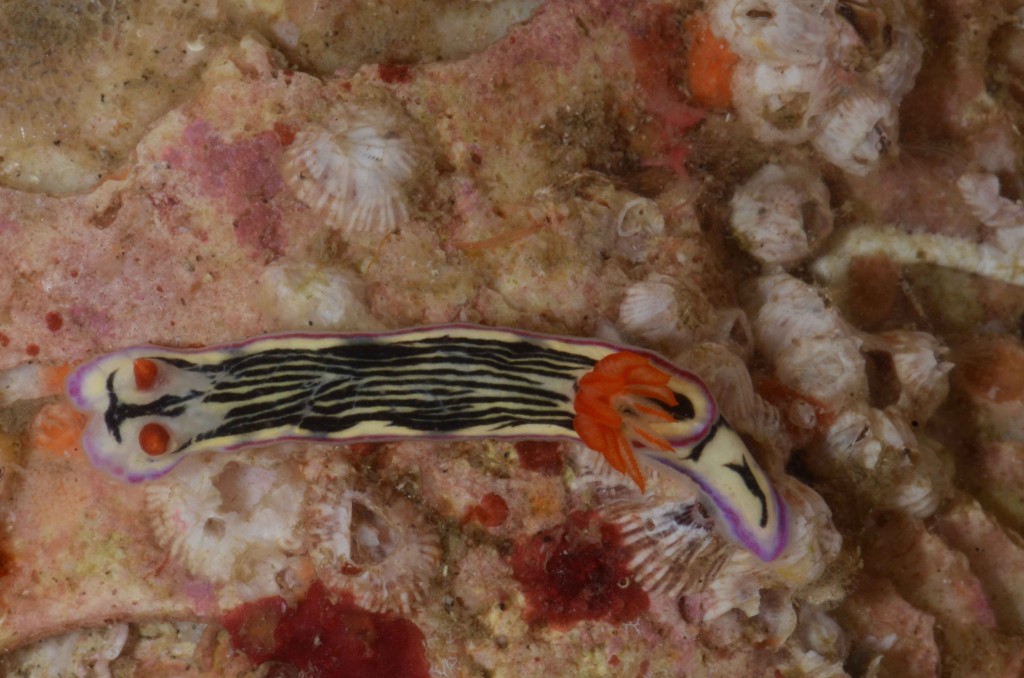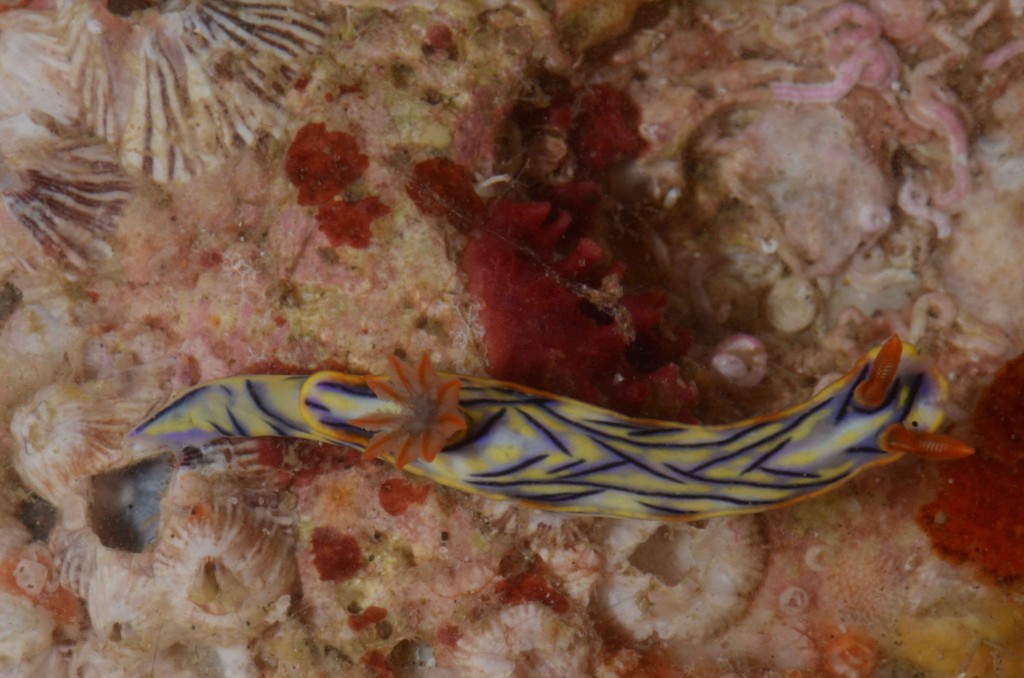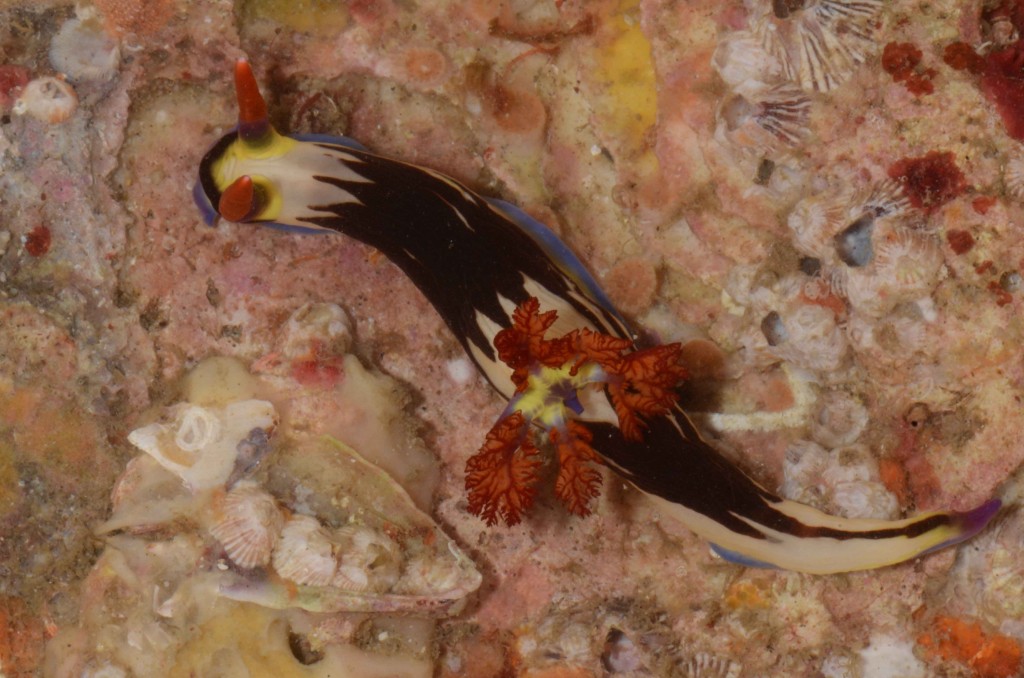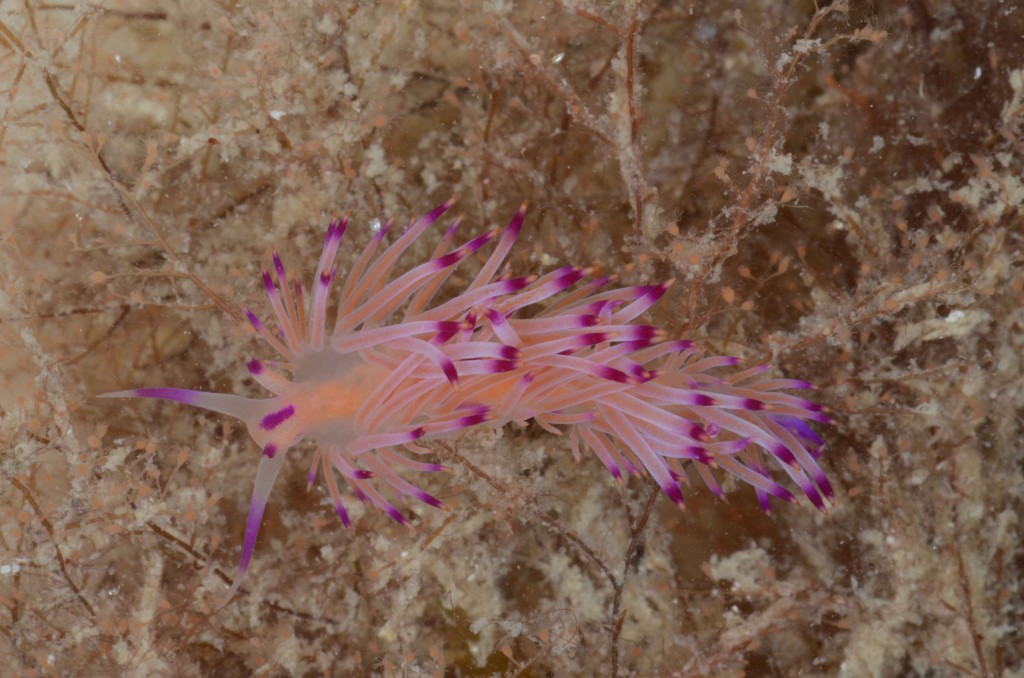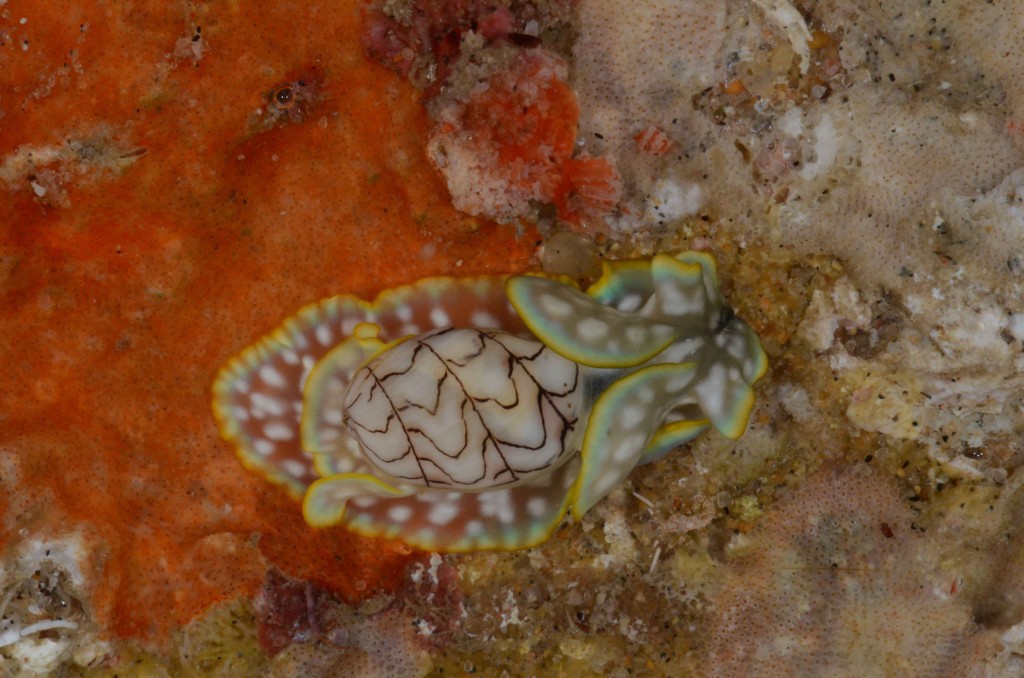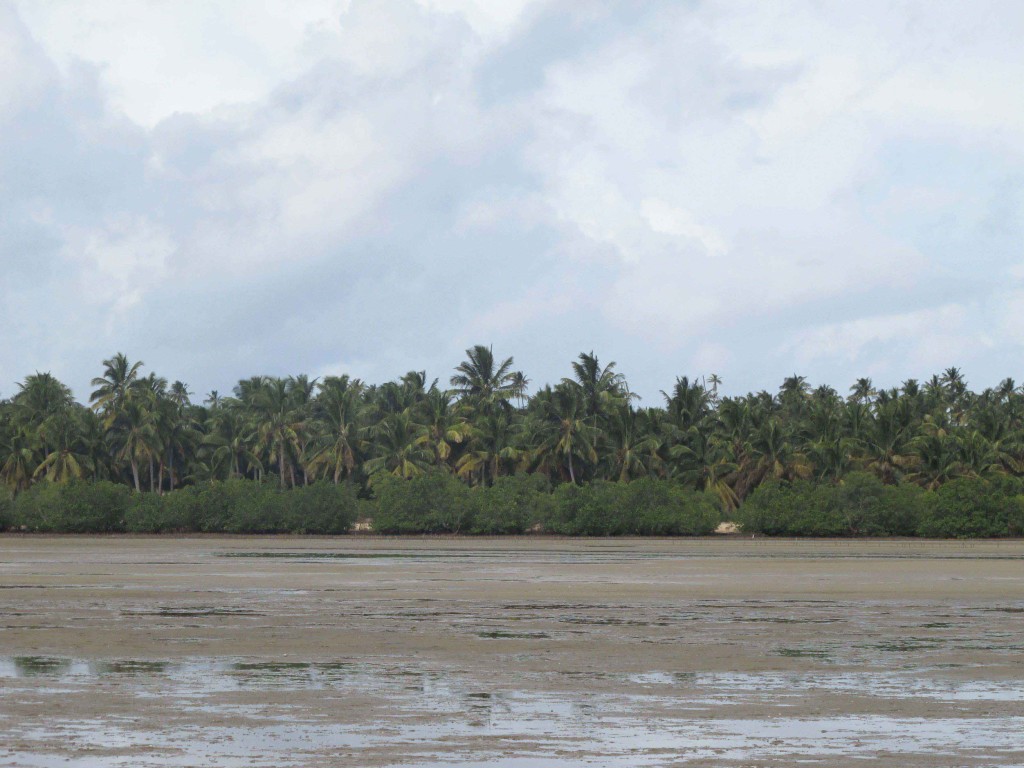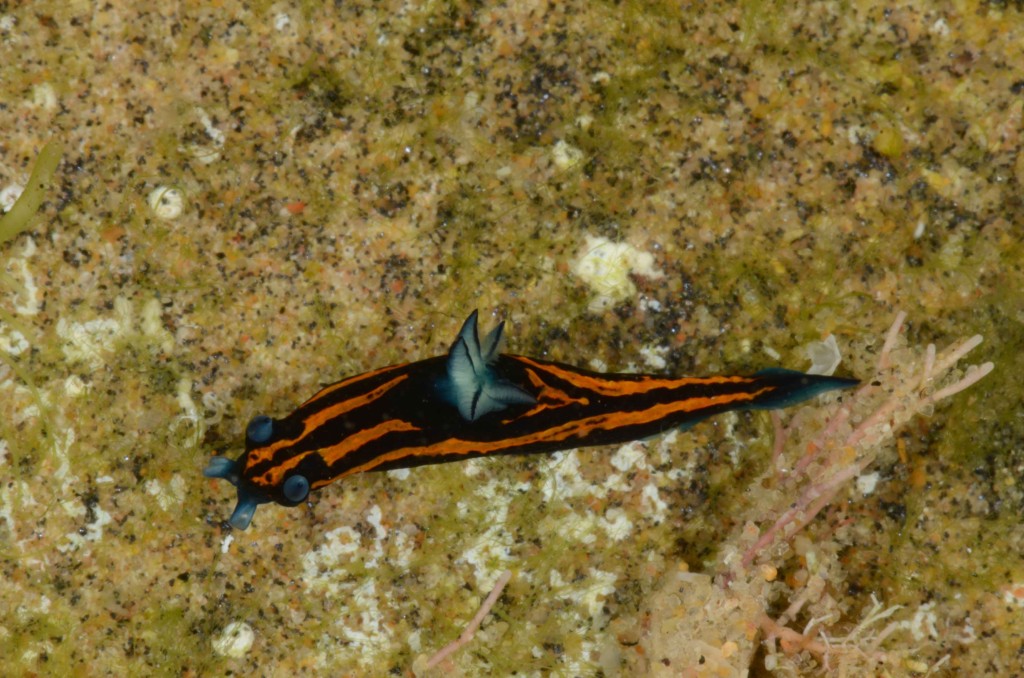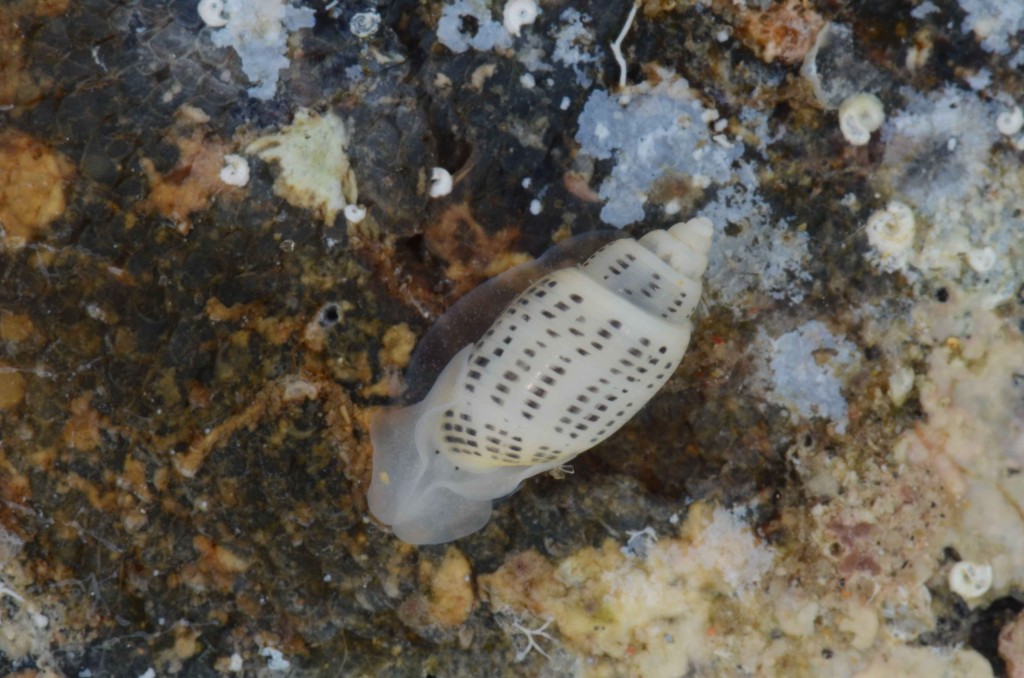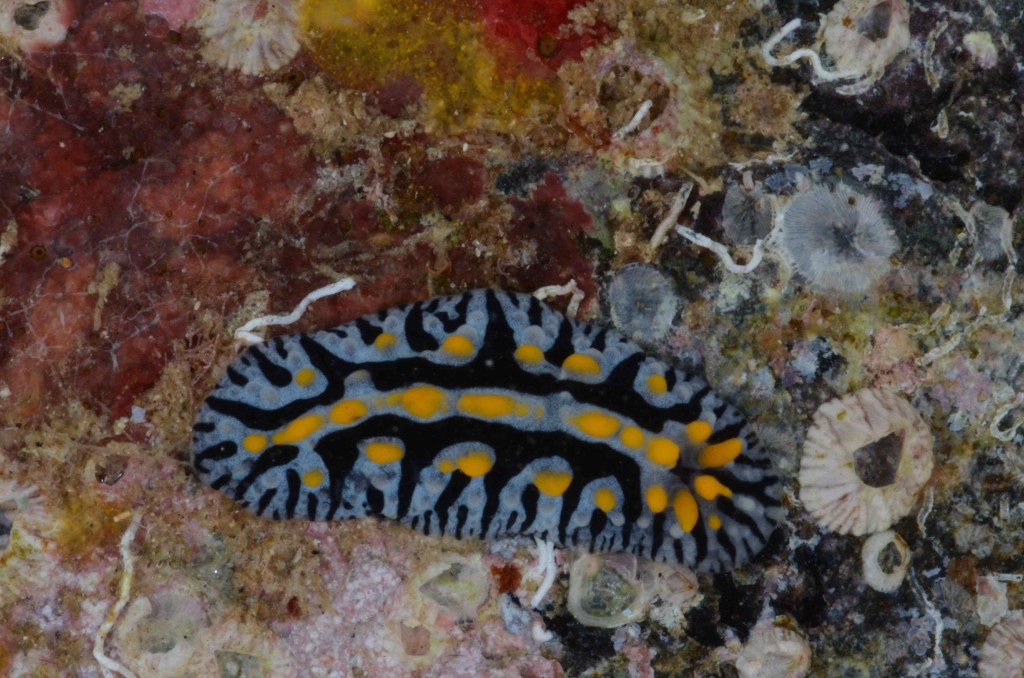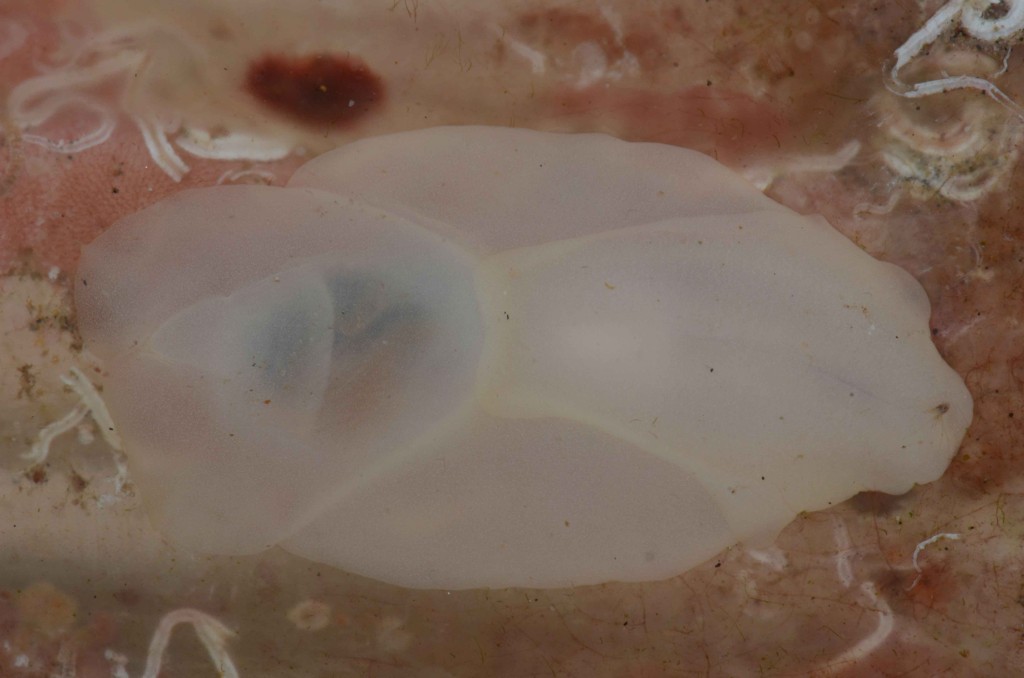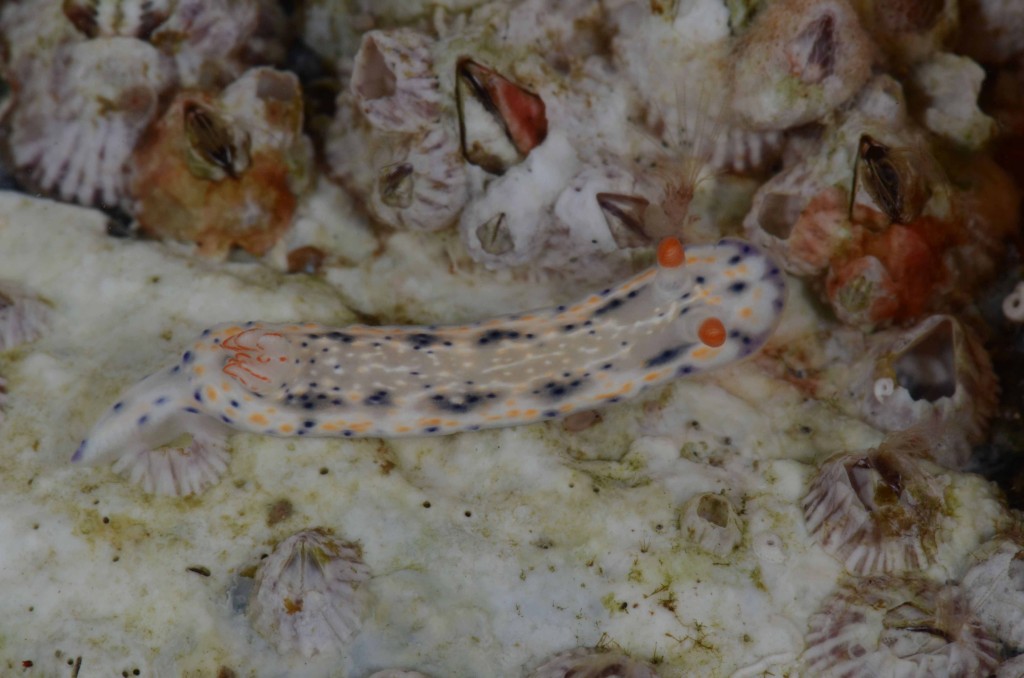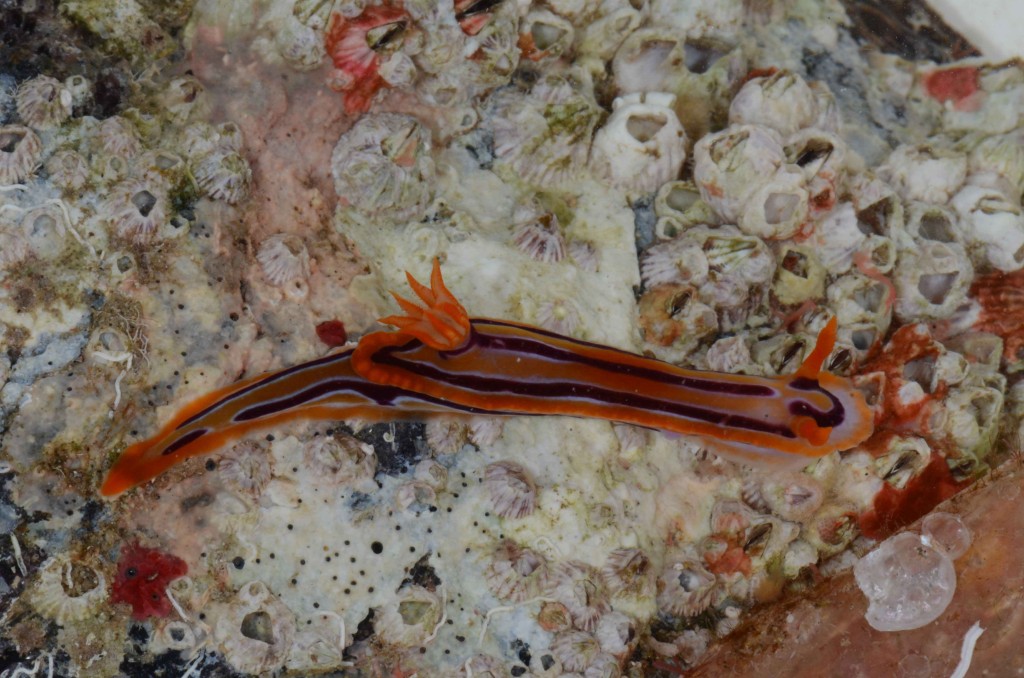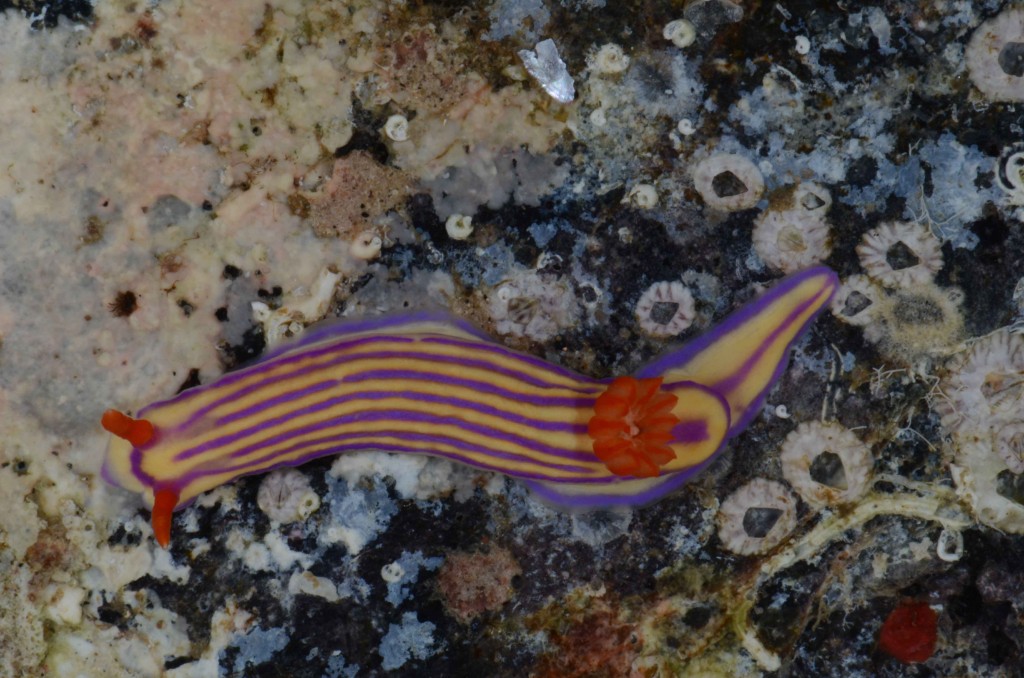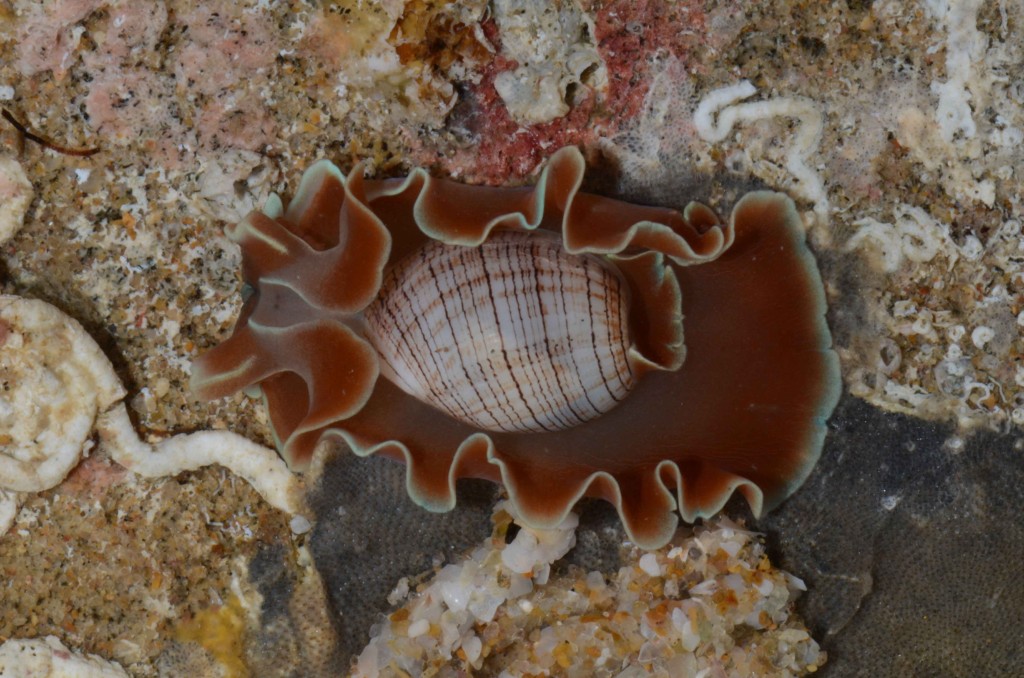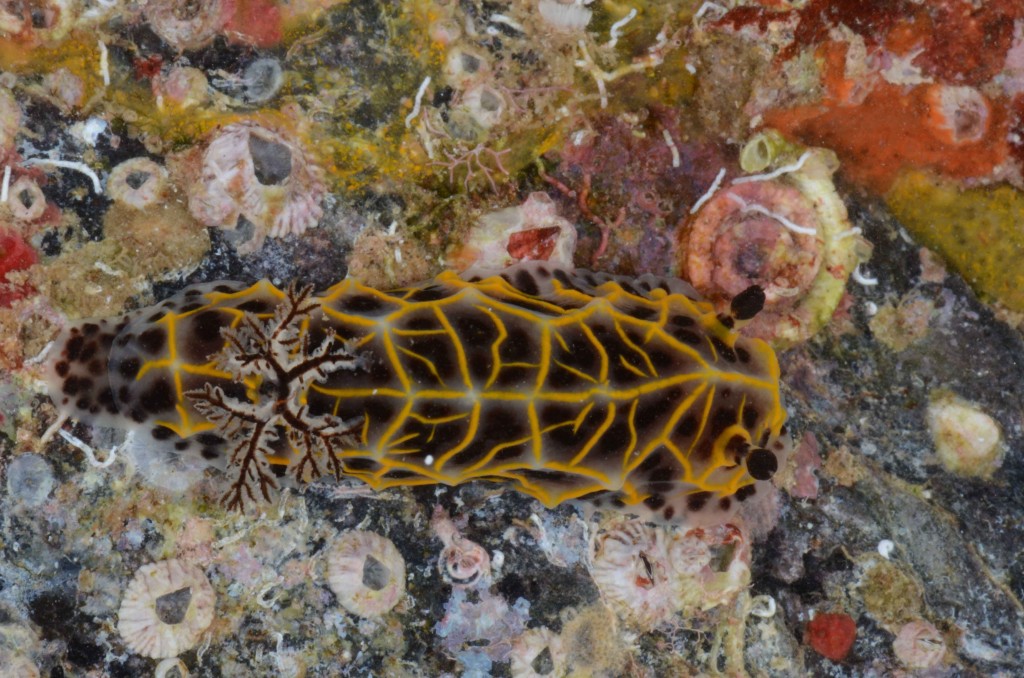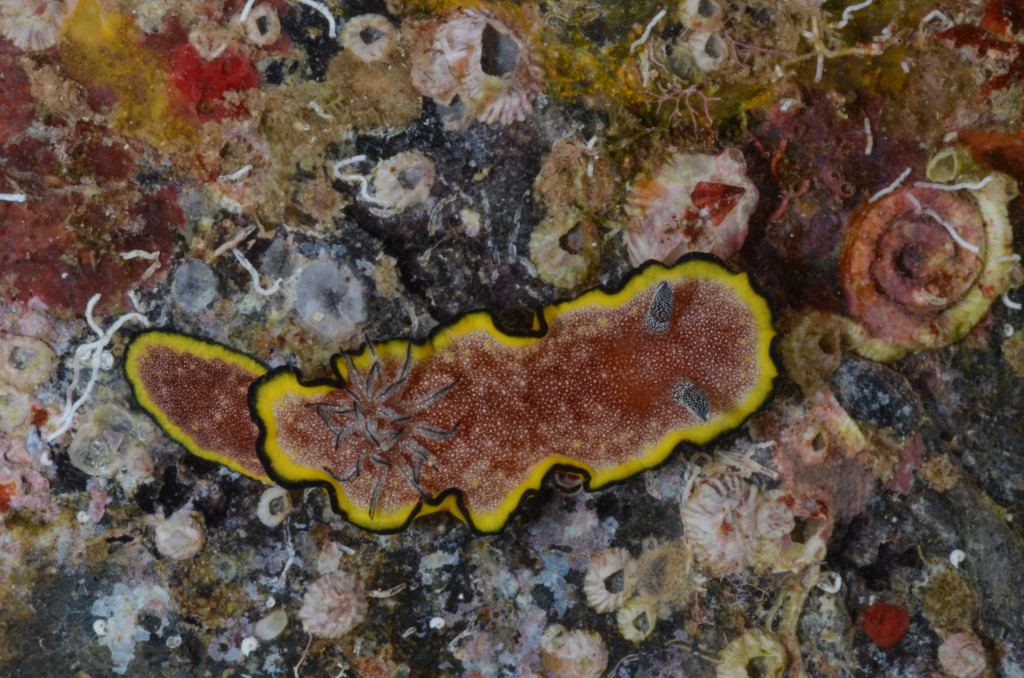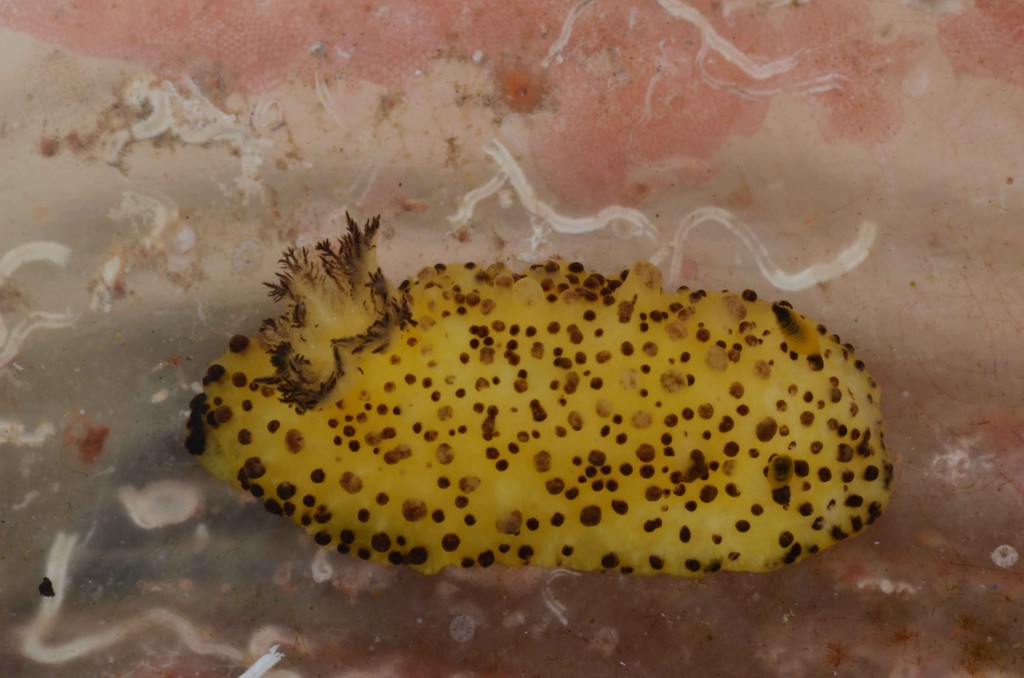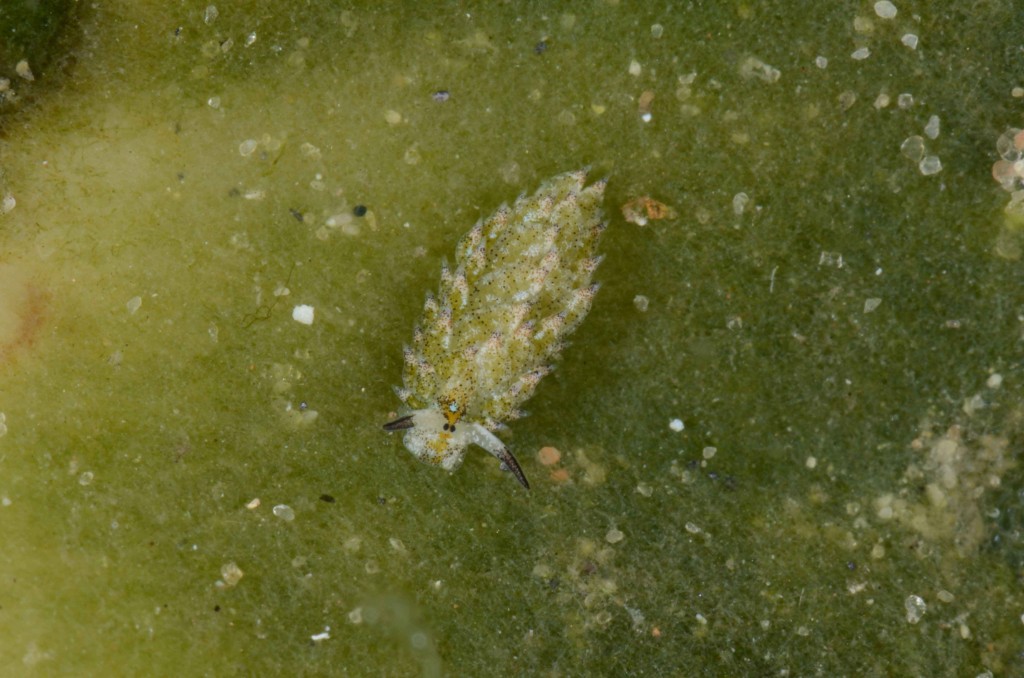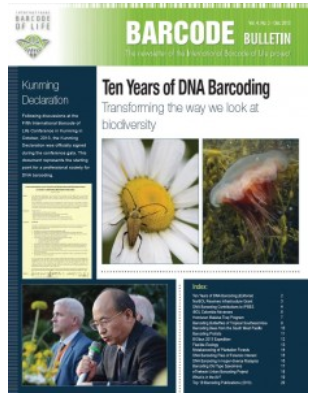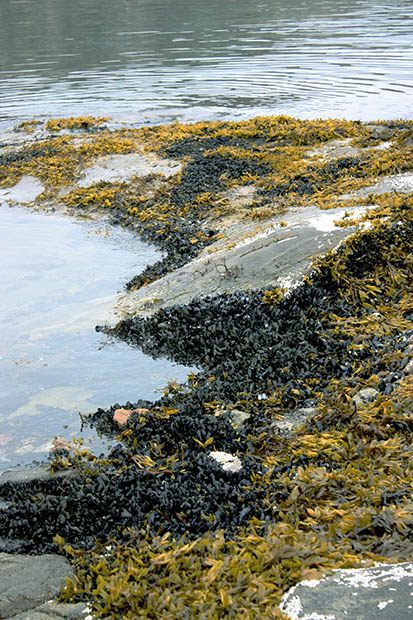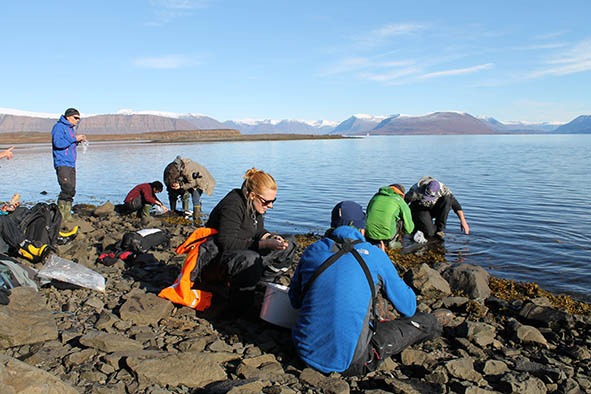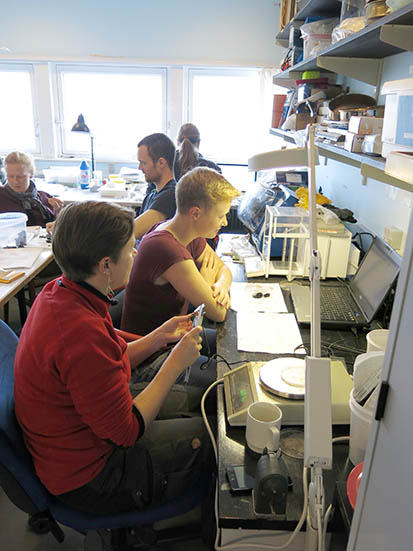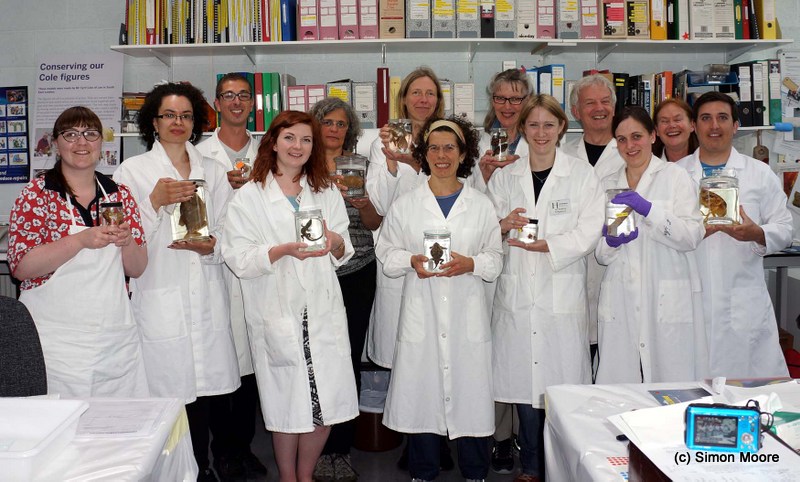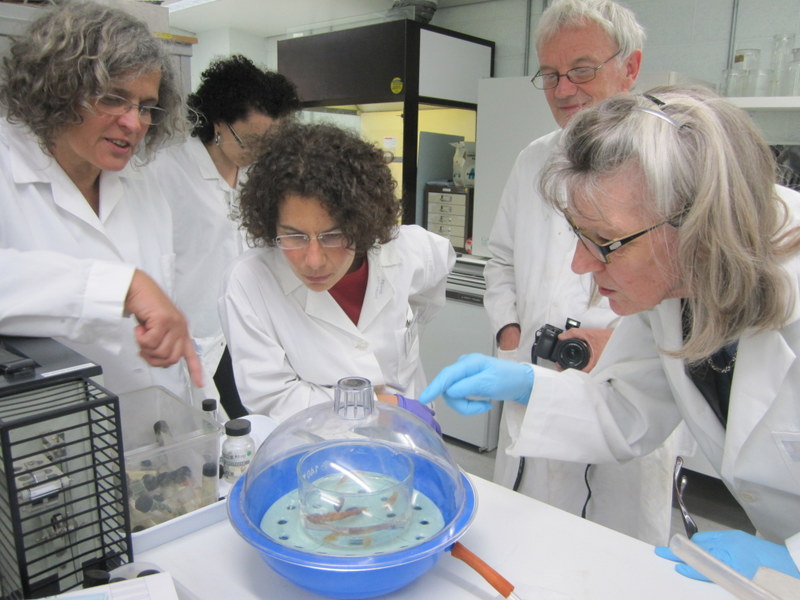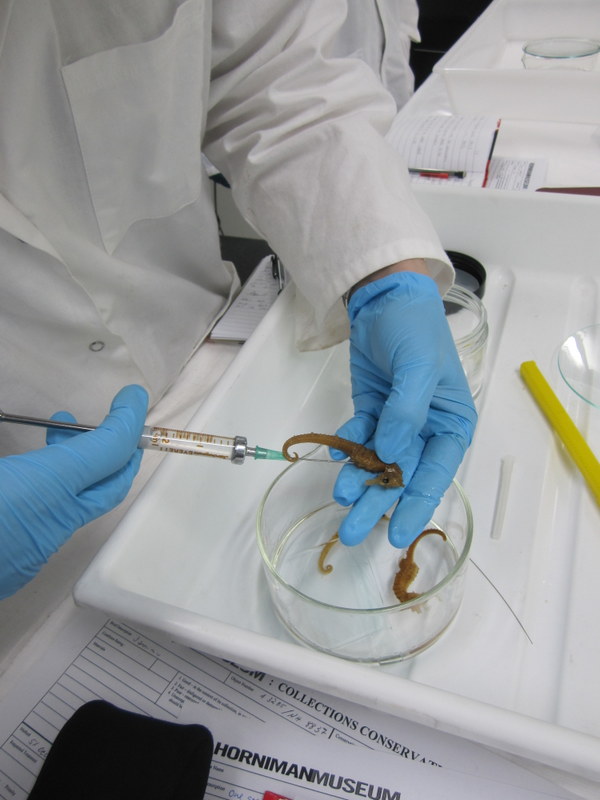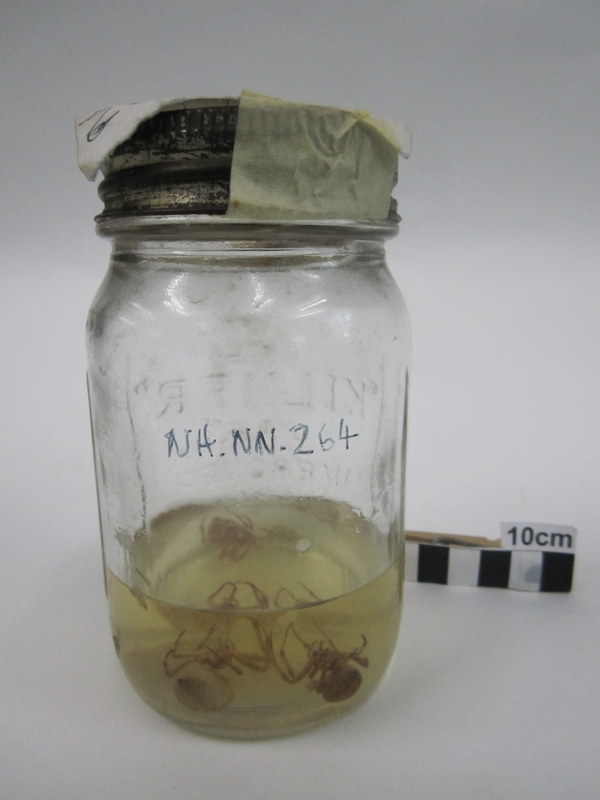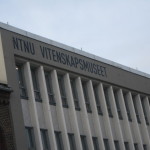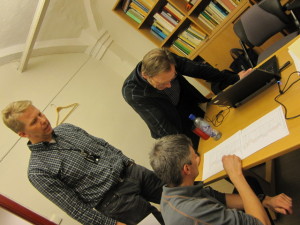In the practice part of the regular UiB Phylogenetics course (BIO332) we also invite participants from other Nordic universities who are members or associates of ForBio, the Research School in Biosystematics. This time we had guests from the University of Iceland, the University of Tromsø, the University of Nordland, the Norwegian University of Science and Technology, the University of Oslo, Uppsala University, and University of Copenhagen.
Category Archives: Uncategorized
Workshop on African invertebrates
We’re currently busy with a workshop on Marine Invertebrates of West Africa , look here for news on that:
More about… Fieldtrip to Mozambique – hunting for seaslugs
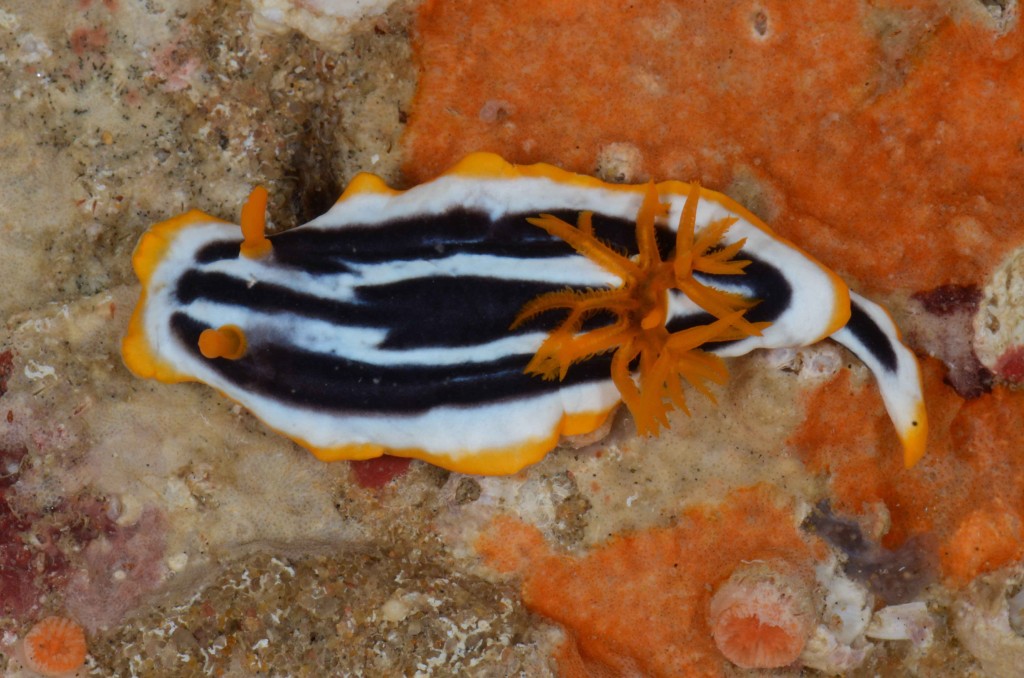
Chromodoris africana (Zavora, Inhambane). This species is part of a complex in need of revision where other “species” imaged here are also part of (e.g. Chromodoris hamiltoni, Hypselodoris regina, Chromodoris elisabethina)
On the 27th January we left the subtropical latitudes and moved into the tropics where we established our base-camp in the town of Vilanculos overlooking the Bazaruto Archipelago Natural Park – a string of six islands surrounded by coral reefs. Regrettably a spiral of bureaucracy and administrative complications made impossible to obtain the necessary collecting permit to sample in the pristine reefs of the Natural Park. Alternative good sampling sites were not that easy to find and the weather conditions also didn’t help much with strong winds and some rain, resulting in a very choppy sea. We decided to move back south one day before scheduled and spend two days in the village of Paindane with great tidal and inshore reefs housing an extraordinary diversity of slugs. Here we sampled both at night- and day-time and was impressive to see the faunal differences between these two periods of the day.
On the 2nd February we travelled back to the village of Zavora where we had meet for the beginning of the campaign. We spend the last three days sampling in Zavora a truly hot spot for marine slugs; the diversity in the tidal and subtidal reefs exceeds anything I have experienced before. My colleagues from the Zavora Marine Lab have already registered the occurrence of nearly 200 species in these reefs and even so we managed to add to the list a few more!
Overall, about 80 species were collected during our fieldtrip but the identification of several of them requires now detailed study and will integrate ongoing projects at the Natural History Museum of Bergen.

Goniobranchus cf. tinctorius (Vilanculos). This is part of another complex of species in need of systematic study
Fieldtrip to Mozambique – collecting sea slugs in the most diverse marine biota of the World
The tropical Indo-West Pacific harbours the highest diversity of marine life in the World with many species still undescribed. In the region, the eastern coast of Africa is one of the less studied areas and few opisthobranchs gastropods have been recorded in Mozambique with a coastline of 2,700 km stretching across sub-tropical and tropical latitudes.
Together with colleagues from the Zavora Marine Lab (Mozambique) I will be surveying the southern part of Mozambique between the village of Zavora – approximately 500 km north of the border with South Africa – and the tropical archipelago of Bazaruto. This 3-weeks fieldtrip (16 Jan–6 Feb) is part of an effort to document the diversity of opisthobranchs at a global scale and to understand the biogeography and speciation patterns of these molluscs.
After a couple of initial days in Zavora we headed north to the region of Inhambane, famous for its aggregations of manta rays and whale sharks where we spent about a week sampling for the far most spectacular sea slugs!
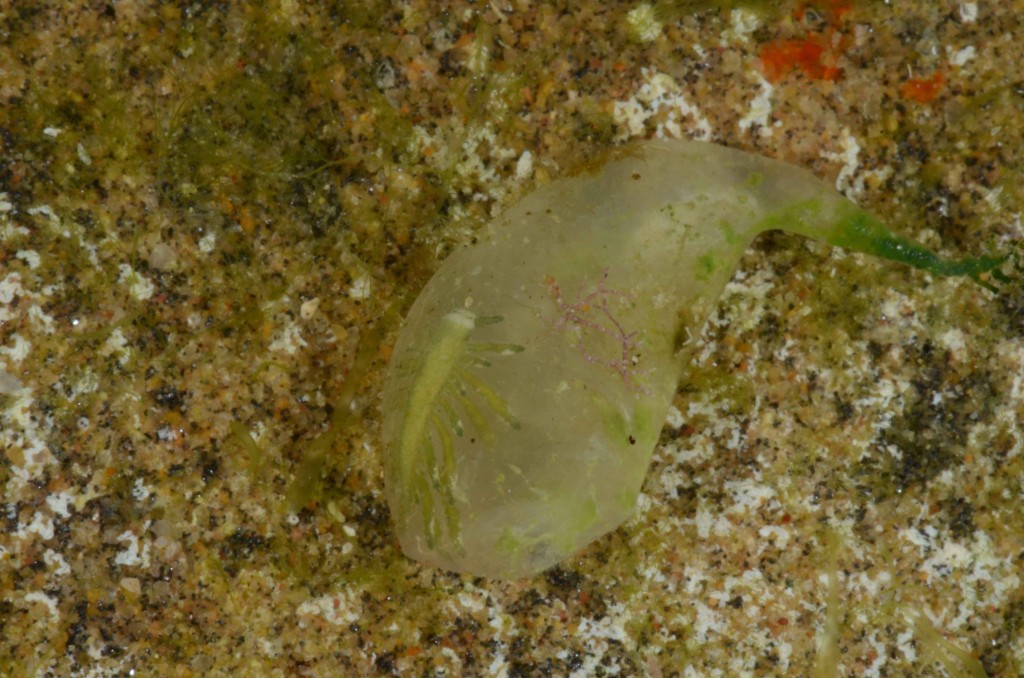
A species of sacoglossan (Placida sp.) found inside the “bubble” algae Valonia sp where it lives and feeds from.
Publicity in Barcode Bulletin
Barcode Bulletin is a newsletter from International Barcode of Life (IBOL). Barcode Bulletin Vol. 4, No. 2 – December 2013 has recently published two stories about activites we are involved in. One nice piece of news is that the Norwegian Biodiversity Information Center and the Research Council of Norway has decided to fund the NorBol consortium. The other news are about our summer 2013 workshop in the MIWA-project which was co-funded via IPBES.

Team blue mussel on the track of the expanding blue mussel in a changing Arctic climate
The blue mussel (Mytilus edulis) is on the run, a historical run. Blue mussels are currently expanding towards the North with an unprecedented pace, taking over new areas along the way.
Blue mussel is an ecologically well-studied species that often dominates the coastal zone, where these characteristic bivalves form a specific habitat with a distinct associated fauna. Such habitat formers, which influence ecosystem structure, have a potential for wide impact if they are able to migrate into new areas due to changing climate. With the record increase in ocean temperatures, the blue mussel has already expanded its northern distribution well into the High-Arctic region.
My PhD project at Aarhus University aims to investigate the distribution, abundance and physiological adaptation of the blue mussel along the West Greenland coast. Thus, my participation in the “ForBio marine field course, Greenland” was of central importance for my project. During my “individual project” in the course, more than 4500 blue mussels were collected at several prime locations! All mussels were measured, weighted, and aged by counting growth rings – a work accomplished by the energetic ‘Team Mussel’, mainly consisting of Josefin and me – Jakob. In spirit though, everybody on the course was a part of this amazing team, and I thank them all for helping out by collecting Blue Mussels in Disco Fjord, while I stayed behind at the station for physiological measurements in the quiet laboratory.
In the final days we expanded our project, collecting material for comparing population dynamics of mussel beds in the low and high tidal zone. To catch the low tide, Josefin and I went on a rainy, cold and dark morning to collect mussels. Despite the early hour, lack of coffee, and no breakfast, we returned to the lab in the rising sun with a whole bunch of mussels. Mette and Jenny had finally seen the light and joined ‘Team Mussel’ full time to help getting everything done in time.
All blue mussel data collected during this course will be used to increase our understanding of the ecological consequences of the expanding blue mussel in the Arctic. By comparing population dynamics and macrophysiology among populations found at Nuuk, Disko Island, Upernavik and Qaanaaq, our studies will allow us to better understand the direct (and indirect) impacts of the changing Arctic climate. Eventually, we hope to expand our knowledge of how species susceptible to expand their current distribution range will influence current ecosystem structure and function in a warmer future.
By Jakob Thyrring (Aarhus Universitet)
World Congress of Malacology, Azores, July 2013
The World Congress of Malacology is the major scientific international meeting in the field of malacology (the study of molluscs) and takes place every third year.

Five of six delegates from the University Museum of Bergen. From left to right: Trond Oskars, Andrea Zamora, Christiane Todt, Manuel Malaquias, Lena Ohnheiser
This year the event was hosted by the University of the Azores in the island of São Miguel between the 21 and 28 of July. Over 400 enthusiastic scientists from all over the World gathered in the middle of the Atlantic Ocean to discuss during five days the latest advances in this science covering various aspects of phylogenetics, biodiversity, ecology, palaeontology, conservation, pest management, adaptations to extreme environments, biogeography, speciation, etc.

Trond Oskars (master student) presenting part of his master thesis on the systematics of cephalaspidean gastropods at the Opisthobranchs Symposium
A delegation from the University Museum comprised by six scientists and students have participated in the event, namely Christiane Todt (post-doctoral researcher), Lena Ohnheiser (research assistant), Andrea Zamora (PhD candidate), Nina Mikkelsen (PhD candidate), Trond Oskars (MSc. student), and Manuel Malaquias (assistant professor). In total, members of the University Museum were co-authors in 14 scientific contributions: four posters and 10 talks presented at the Aculifera and Opisthobranchs symposiums.
The next congress will take place in Penang, Malaysia in 2016 and we look forward for it!
Fluid Preservation Course
Curating a natural history collection comes with many challenges; how do you “freeze” the specimen in such a state that another taxonomist can request to examine it in 10 (20, 30, 50, 100…) years from now, and expect to find the same characters (the traits that are used for determining which species one is looking at) as the one who originally described or determined the specimen?
Which fluid should then be used as a preservative? Here we nee to take into consideration such features as potential harmfulness, fire hazards, longviety, the possible effects on histology and DNA, resistance to pests, effects on the container it is kept in, etc. etc. And how should the samples be stored? How do you rescue objects that have been damaged?
I spent most of last week attending a course in methods for fixing and preserving natural history specimens in fluid; The «Fluid Preservation Course» was given by Simon Moore at The Horniman Museum in London.
Some of the topics covered included
- different methods and chemicals for fixating and preserving specimens,
- how to work with glass (cutting, drilling and grinding), especially how to make lids for jars of various sizes,
- how to make and repair objects for display,
- how to salvage specimens that have been damaged due to dessication, fungi or other perils,
- avaliable chemicals and their properties,
- how to determine which chemicals the animals are stored in
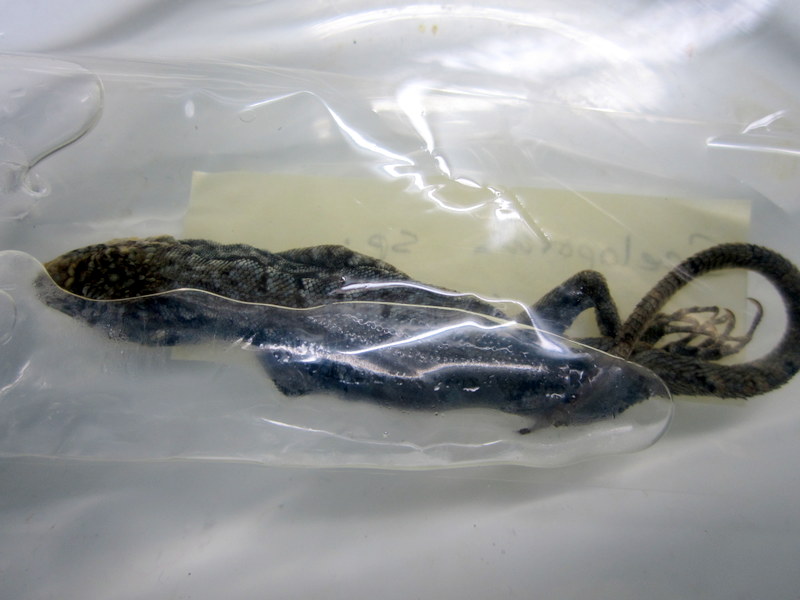
Making a display part 1: One lizard in a bag. Extract from bag, figure out which preservative has been used, transfer to suitable new preservative.
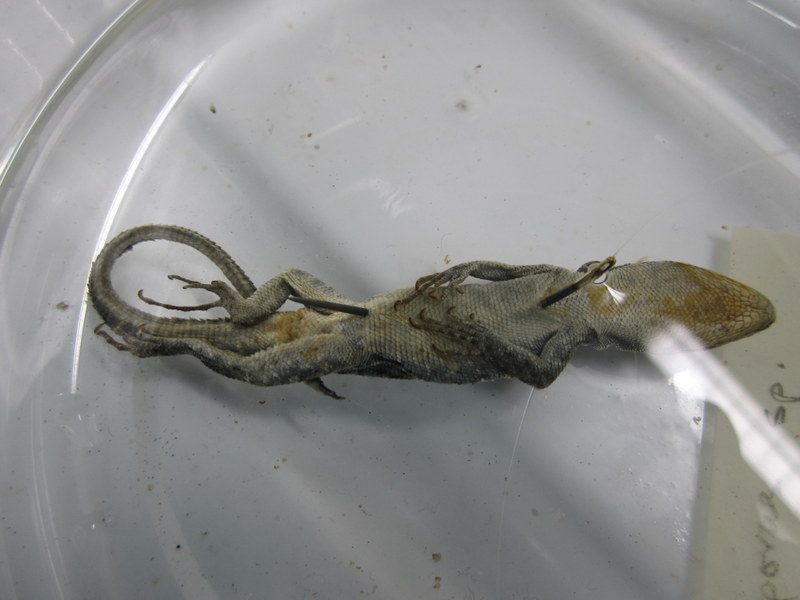
Making a display part 2b: Stitch monofilament in to lizard to mount it on a custom made piece of glass in the jar (it looks rather brutal, doesn’t it?)
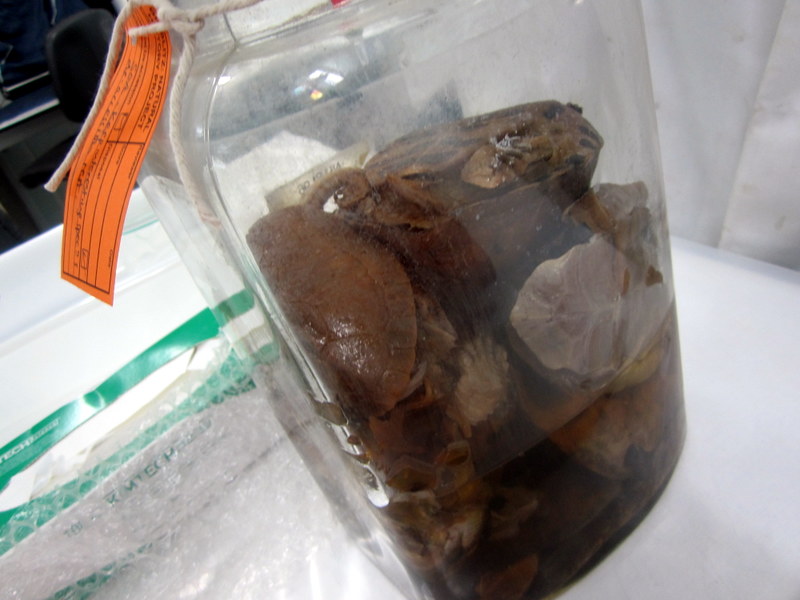
A jar stuffed full of turtles and tortoises in really bad condition – we tried to salvage as much as possible, especially one specimen that was of a species they didn’t have in the museum collection.
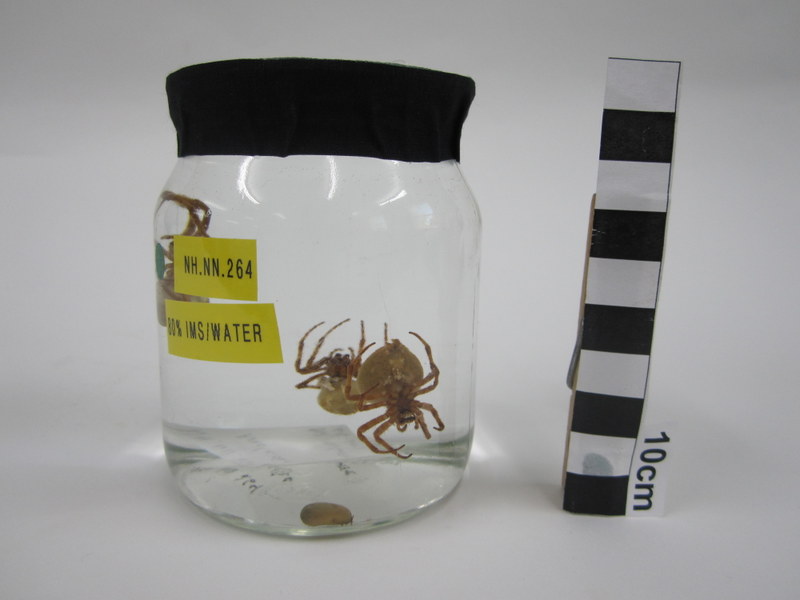
The spiders have been mounted on monofilament, the missing legs have been re-attached using class needles and colloidin as glue, the jar has been replaced, and they are now stored in 80% alcohol.
Focus on West African crabs (Brachyura)

R/V Dr Fridtjof Nansen sampling stations for which benthic samples have been deposited in the Invertebrate Collections of Bergen. Red dots: the Canary Current Large Marine Ecosystem (CCLME). Yellow dots: the Guinea Current Large Marine Ecosystem (GCLME)
Since 2005 the research vessel R/V Dr Fridtjof Nansen has been sampling benthic invertebrates on the continental shelf of the large marine ecosystems (GCLME and CCLME) of West Africa. A large bulk of the material is kept in our collection and is being processed for taxonomic and other studies by several workers.
These days we are particularly focusing on the true crabs (Brachyura) and are preparing specimens for DNA barcoding with the BOLD system. This work will produce open access data (genetics, morphology, distribution) to enhance a broader knowledge about Atlantic marine biodiversity. The project is financially supported by JRS Biodiversity Foundation.
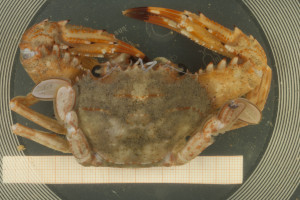
Cronius ruber (Lamarck, 1818) caught off Guinea at 35 m depth in May 2012. (Identification E.Willassen)
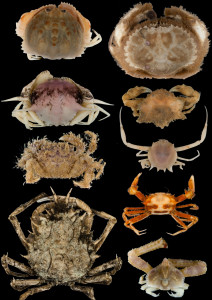
A small assembly of crabs photographed and prepared for DNA barcoding. Some specimens have still kept some colors despite being preserved in ethanol

